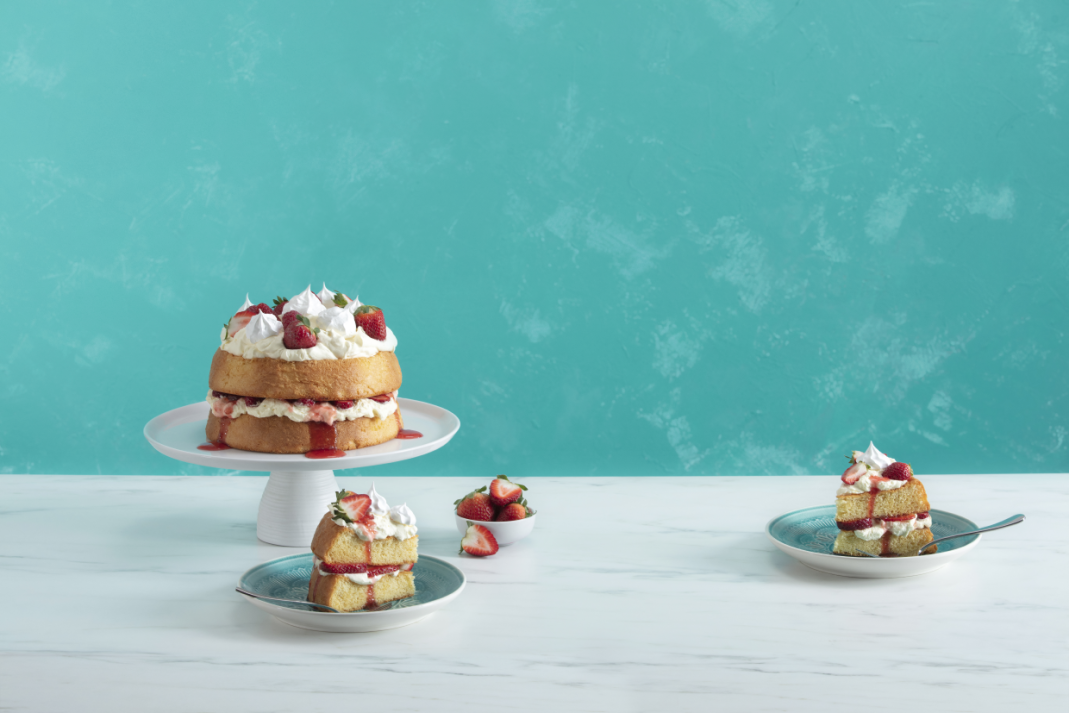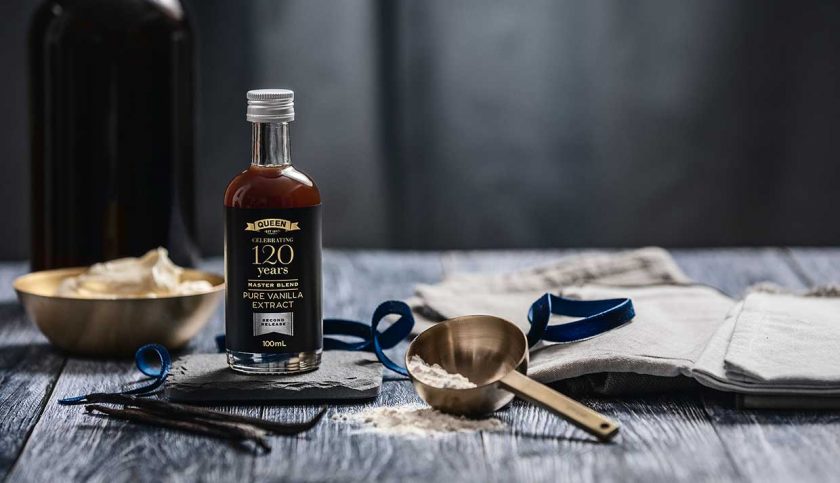1. Relax, it takes time.
This might sound like a silly first tip, but baking is a skill that sometimes takes a little time to master, and even the most experienced have cake fails sometimes. You might strike it lucky on your first sponge cake attempt, or you might not. Don’t fret, with a little patience, practice and know-how from our tips below, you’ll be turning sponge cakes out with ease soon enough.
2. Precision pays off
This is not a spaghetti bolognese, and as Donna Hay says, “the fewer ingredients, the more precise you have to be.” What does precision look like? It means using a knife to level off your flour in the measuring cup, or even better using scales, measuring your liquid using a measuring jug as closely to the line as possible and paying attention to the size of your eggs.
3. Eggs for Excellence
Eggs are one of the main ingredients in a sponge cake, so it’s important to know the size of the eggs hanging out in your fridge. A 700g carton of eggs will give you individual eggs approx. 58-60g, which are ideal for our Raspberry Vanilla Sponge Cake recipe.
4. Room temperature, please.
To assist beating, bring your eggs to room temperature at least 30 mins before starting your cake. You can speed this up by cracking your eggs into a clean, glass bowl, which will allow warmer air to circulate around them.
5. Give it some air
The magic of a light, fluffy sponge with tender crumb is to incorporate as much air in as possible. After all, it is the entrapped air that expands in the oven, creating the magic of the cake rising. Anyone that has ever blown bubbles will know how quickly they pop, so you don’t want to hang around checking your text messages or instagramming your mixture when making a sponge cake. That can happen after it’s out of the oven!
6. Dig out those electric beaters
While we love our stand mixers (such as Kitchenaid, Kenwood or Breville), these mixtures are actually TOO efficient and vigorous on those delicate, eggy air bubbles. If you can, try mixing with a hand-held electric beater. Your eggs are ready when you can stop the beaters and create a figure 8 in the top of the mixture, which doesn’t dissolve back into the mixture (a handy CWA tip!).
7. Go Glass
Once again, another egg secret. Eggs don’t like plastic, so be sure to use a glass of metal bowl when beating your eggs to ensure they stretch and incorporate lots of lovely air bubbles.
8. Your oven is the answer
This is one of the big sponge cake secrets – it’s all down to your oven. While our recipe suggests 160C for a fan forced oven, your oven might run a smidge hotter or cooler. This is when practice becomes important (see tip #1). If your cake is too tough, try a slightly hotter temperature so that you don’t have to cook it for any longer than 15-20 minutes.
9. Fold like a pro
A good folding technique is essential for sponge cakes. When folding flour into the beaten eggs, use a spatula to “cut through and lift” just like Donna Hay in her video here.
10. Love thy scales
Skip the challenge of cutting your finished cake in half and instead pour the batter evenly into two prepared cake tins. For two perfectly even cakes, weigh the mixture into each cake tin.
11. No skewer
Your finished sponge will be so delicate; a skewer will cause that precious air to deflate! Instead, gently press the top of the sponge. Once ready, they will lightly spring back.
12. Turn it out!
Unlike most cakes, you are best to turn sponge cakes out onto a wire racked lined covered with three tea towels within a couple of minutes of removing from the oven. This will prevent those unsightly wire rack marks appearing on your delicate cake.
And just like that, you now have a beautiful sponge cake! We hope you enjoy the bright, honest flavours of our Classic no-fail Sponge Cake with irresistible passionfruit icing and share it with those you love most.

– The Queen team




Comments & Reviews
I have a passion for baking
Negative
Ԍreɑt article.
E
I like baking
Busi
Have you got the sponge recipe please?
Sandra
Sandra
Hi Sandra, have a search in the search bar for Sponge Cake and you’ll be able to review our full range of varieties.
Queen
Is this receipt suitable for a stack cake please
Pauline
Hi Pauline, it definitely can be used in a stack cake, just make sure you have extra thick layers of icing throughout. Thanks!
Queen
thankyou i learnt a lot, will give it another try. can you do this on scones too hints. thanks
Annette